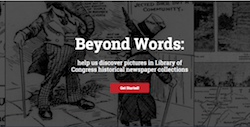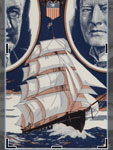It can be time-consuming to find and prepare primary sources for your lessons. On each of the below sites, you will find primary sources that address multiple topics in U.S. History. Many of the sites provide excerpts of lengthy sources and helpful annotations. Start at one of these sites to find primary sources to use in your next lesson!
Websites with Collections of Primary Sources
100 Milestone Documents, from Our Documents at the National Archives: This collection of 100 milestone documents has been compiled by the National Archives and chronicles the history of the U.S. from 1776 to 1965. Sources include public laws, Supreme Court decisions, inaugural speeches, treaties, constitutional amendments, and other documents that have influenced the course of U.S. history. Both original and transcribed copies are available.
The Avalon Project, from the Yale Law School: This collection, which can be viewed chronologically from the fifteenth century to the twenty-first, includes documents selected for their importance in American legal history. Sources can also be searched by themed “Document Collections”.
Docs Teach, from the National Archives: This collection of over 3,000 primary documents is organized by historical era, from the nation’s founding to the present. Documents, including maps, charts, graphs, audio, and video, have been selected by National Archives Staff, and are photographic reproductions of historical sources.
Many Pasts, from the History Matters project of CUNY Graduate Center and George Mason University: This feature of George Mason University’s History Matters project features prepared and selected primary documents in text, image, and audio about the experiences of ordinary Americans throughout U.S. history. The “full search” feature on the site allows users to choose resources by historical period, topic, type of resource, etc.
Smithsonian Source, from the Smithsonian Institute: This collection of primary sources can be searched by keyword, type, or topic, and includes documents on Westward Expansion, Transportation, Civil Rights, Invention, Colonial America, and Native American history. Each set includes selected and excerpted documents.
You can also visit this entry for places to find online sets of primary sources.


